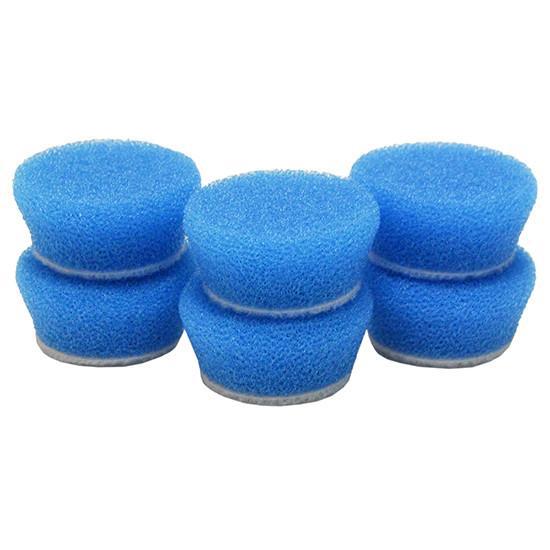Fluid Leather is only recommended for damage where a filling is necessary. For scratches and general wear-and-tear on the colour surface we recommend smoothing the surface with the COLOURLOCK Leather Sanding Pad and refreshing the colour with COLOURLOCK Leather Fresh.
Fill the damaged areas with COLOURLOCK Fluid Leather and spread evenly with a spatula. Leave to dry for 1-2 hours, depending on the amount used. Repeat the procedure until the repaired area is as full and smooth as possible.
COLOURLOCK Fluid Leather cannot be sanded dry. This would damage the repair.
We recommend using the COLOURLOCK GLD Solvent ND Pen to smooth the repair. The GLD Solvent slightly dissolves the surface of the COLOURLOCK Fluid Leather and provides a smoother finish.
Open the lid of the COLOURLOCK GLD Solvent ND Pen and press down the felt tip several times until it is moistened. If the felt tip gets too moist, remove the excess quantity by cleaning it with a cloth. Smooth the repair area carefully with the moistened felt tip. When the repair area is wet with GLD, an additional treatment with the COLOURLOCK Leather Sanding Pad can be done to smooth the repair area. Always work with a small amount of GLD to prevent the repair area from becoming too dissolved. Using GLD, a repair can be adjusted to achieve the best possible result.
Professionals can repair the graining on a work area using a Repair Grain. Usually, old leathers are smooth and do not need a new graining.
The tip of the GLD Solvent ND Pen can be removed and reversed when worn. Especially when working on a new colour, it is necessary to change or turn the felt tip upside down.
Finally, repairs with COLOURLOCK Fluid Leather must be recoloured with COLOURLOCK Leather Fresh to balance differences in colour and gloss. In order to cover the COLOURLOCK Fluid Leather sufficiently, the COLOURLOCK Leather Fresh should be dabbed onto the area several times and dried between the layers with a hair dryer. After 24 hours treat the leather with Leather Protector.




















